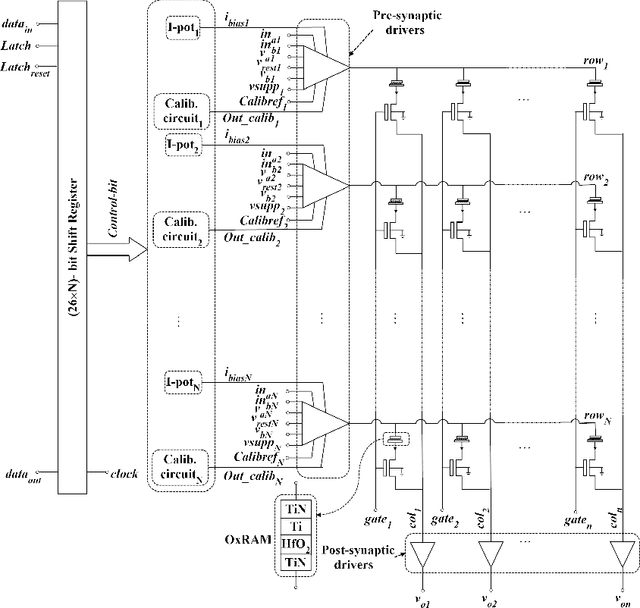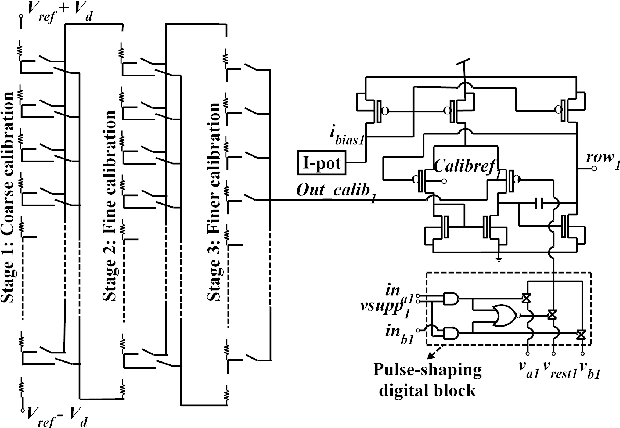Bernabé Linares-Barranco
A Memristor-Inspired Computation for Epileptiform Signals in Spheroids
Jul 10, 2023



Abstract:In this paper we present a memristor-inspired computational method for obtaining a type of running spectrogram or fingerprint of epileptiform activity generated by rodent hippocampal spheroids. It can be used to compute on the fly and with low computational cost an alert-level signal for epileptiform events onset. Here, we describe the computational method behind this fingerprint technique and illustrate it using epileptiform events recorded from hippocampal spheroids using a microelectrode array system.
* published in 2023 IEEE 5th International Conference on Artificial Intelligence Circuits and Systems (AICAS)
Experimental Body-input Three-stage DC offset Calibration Scheme for Memristive Crossbar
Mar 03, 2021



Abstract:Reading several ReRAMs simultaneously in a neuromorphic circuit increases power consumption and limits scalability. Applying small inference read pulses is a vain attempt when offset voltages of the read-out circuit are decisively more. This paper presents an experimental validation of a three-stage calibration scheme to calibrate the DC offset voltage across the rows of the memristive crossbar. The proposed method is based on biasing the body terminal of one of the differential pair MOSFETs of the buffer through a series of cascaded resistor banks arranged in three stages: coarse, fine and finer stages. The circuit is designed in a 130 nm CMOS technology, where the OxRAM-based binary memristors are built on top of it. A dedicated PCB and other auxiliary boards have been designed for testing the chip. Experimental results validate the presented approach, which is only limited by mismatch and electrical noise.
 Add to Chrome
Add to Chrome Add to Firefox
Add to Firefox Add to Edge
Add to Edge